For months now, we’ve seen images of the intricate sets used aboard the Klingon sarcophagus ship — one of the primary Klingon vessels used in Star Trek: Discovery — but we’ve been left to guess at the nature of the unique starship.
Today, however, in a new interview with SFX Magazine, series co-executive producer Ted Sullivan spilled some secrets about the gargantuan vessel and its meaning to the House of T’Kuvma.
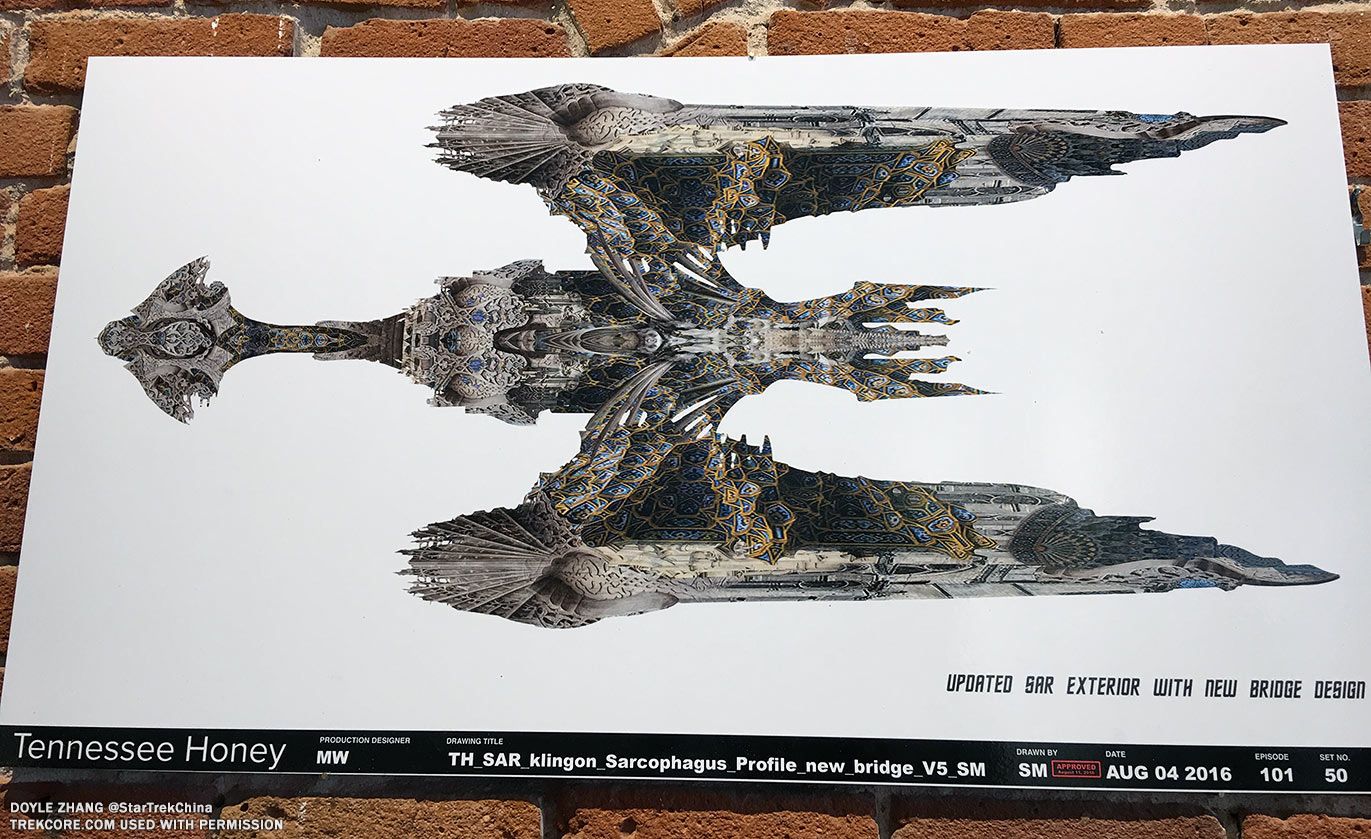
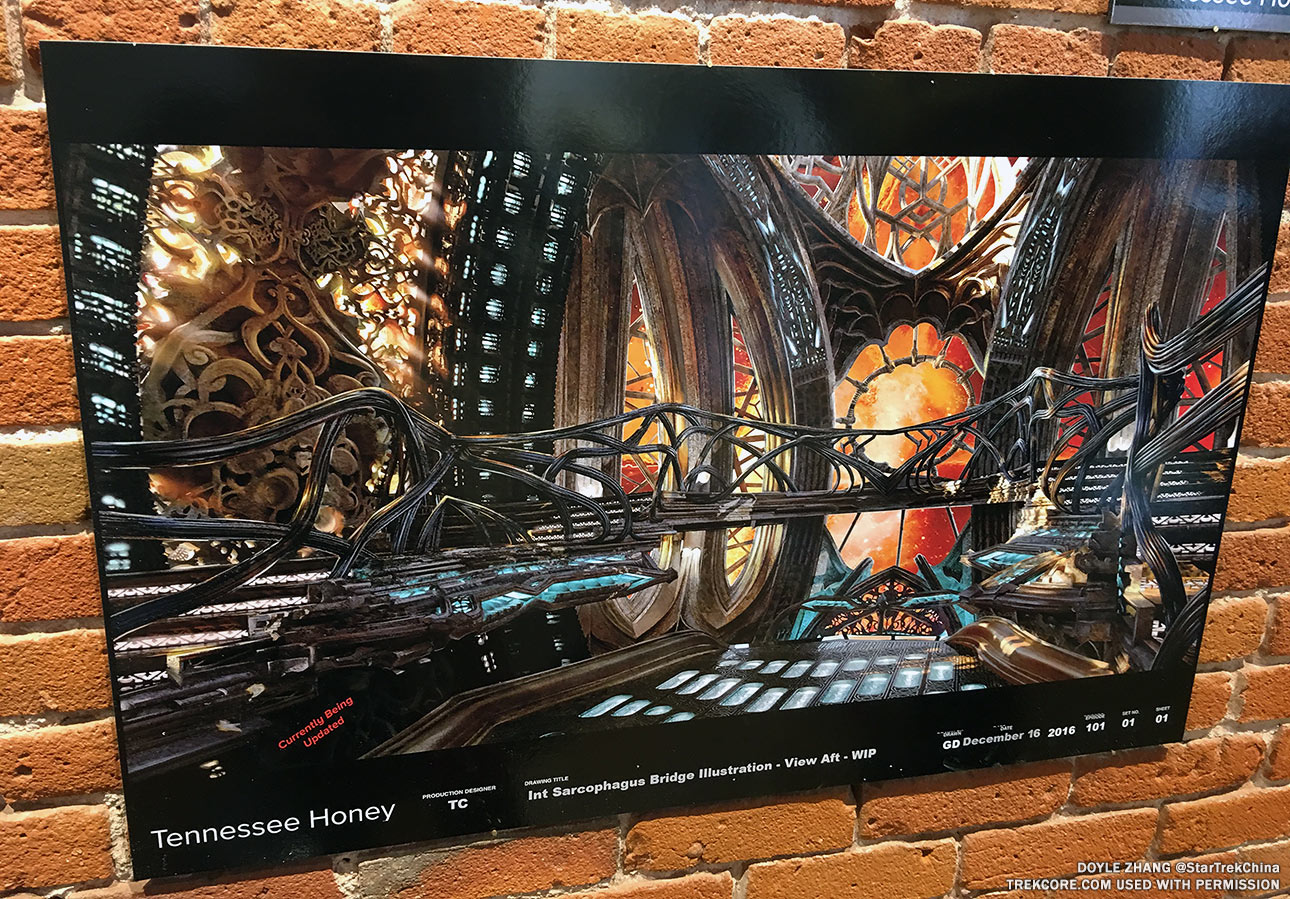
From writer Ian Berriman’s description of the ship sets, information gleaned from a press visit to the Discovery sets in Toronto:
[The] Klingon ‘sarcophagus ship’ — an enormous vessel (three times the size of its Federation counterparts — [belongs] to a 25th Klingon house that we hadn’t previously heard of.
[…]
Its stepped control deck [is] devoid of the usual consoles, because these Klingons intervace with their computers directly via ornate silver masks.

Sullivan explains where this huge ship fits into the story:
It’s a 200-year-old ship. This is a group of Klingons who’ve gone back to a puritan way of life. They look very different: they wear armor that’s 200 years old and they don’t have any hair.
Their commander [T’Kuvma, played by Chris Obi] runs his Klingon house – the house of T’Kuvma – by the rules of Kahless, the Klingon messiah. And he calls himself the second coming of the Klingon messiah.
In the past, Klingons have not really cared about their dead – they’re not like marines. But these Klingons are. The outside of the ship is covered in thousands of coffins. Some are 300 years old, some are just two days old.
Downstairs is the death room, where they prepare their dead; then the coffins get raised up and put on the outside.
Sullivan’s reference to Klingons who “have not really cared about their dead” is something Trek directly addresses all the way back in Season 1 of Star Trek: The Next Generation.
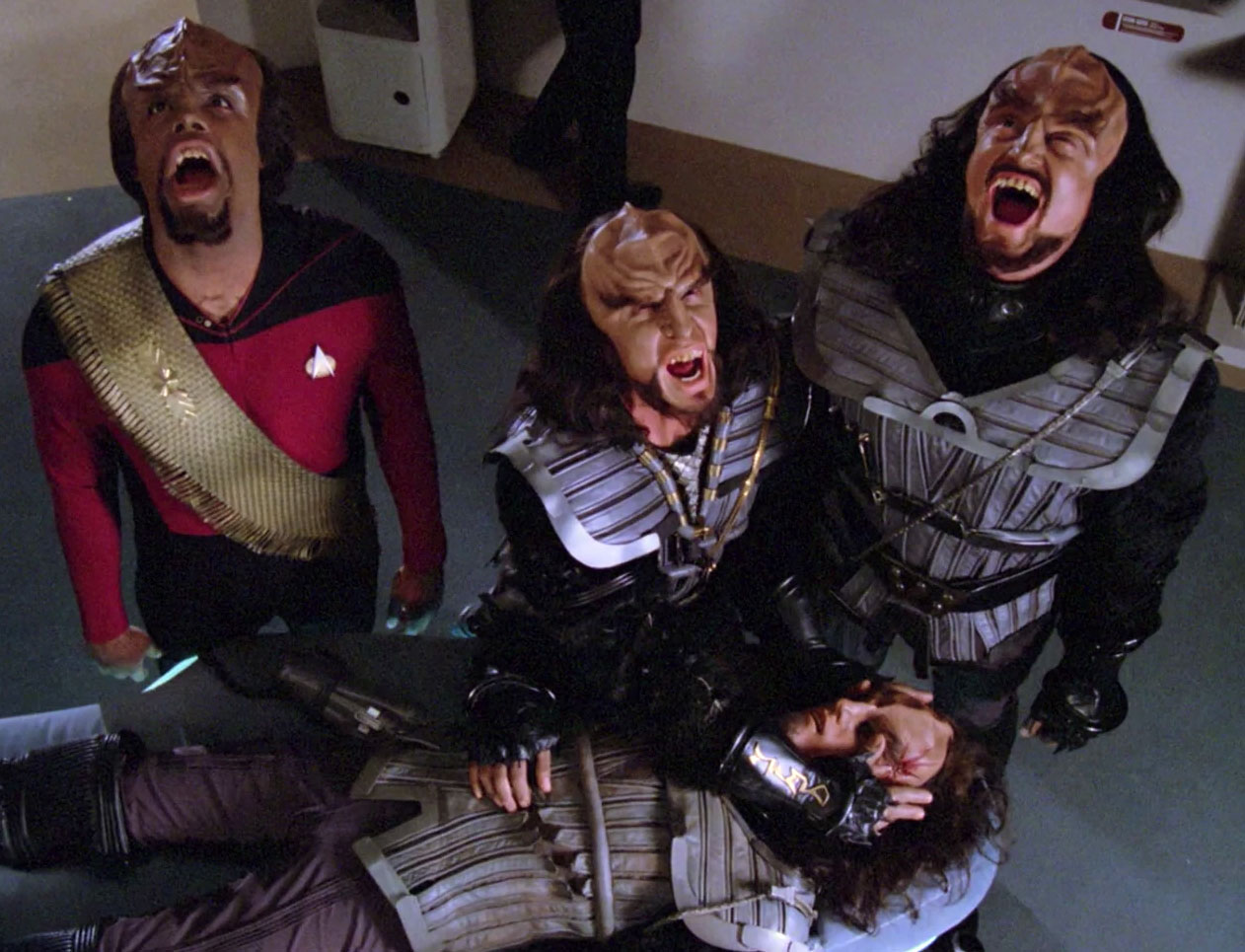
After Klingon warrior Kunivas dies in “Heart of Glory,” the trio of living Klingons present scream out to Sto-vo-kor to announce his coming to the Klingon afterlife, but afterwards show little interest in the fallen soldier’s corpse.
CRUSHER: Is there any special arrangement you would like for the body?
KORRIS: It is only an empty shell now. Please treat it as such.
In the preview trailers for Star Trek: Discovery, we’ve seen that same ancient ritual performed by members of the House of T’Kuvma; screaming to the heavens over a fallen comrade.
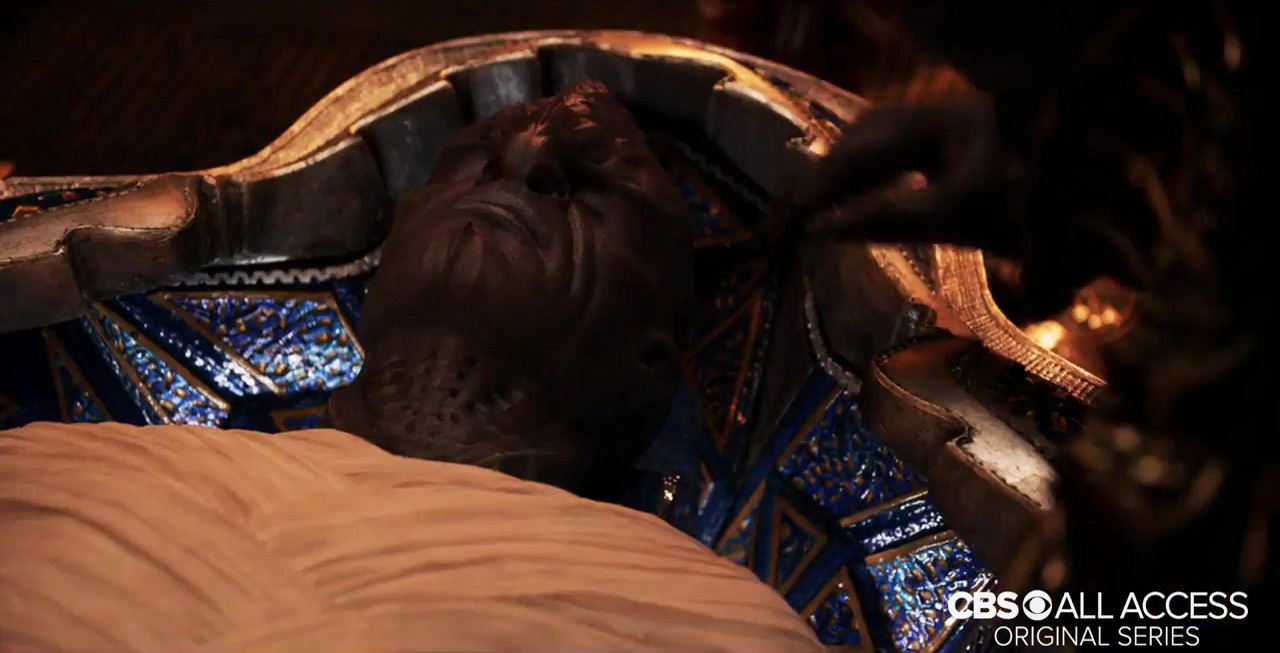

However, unlike the warriors of the Next Generation era, their coffin raises through the ceremonial chamber to be mounted on the outside of the sarcophagus ship.

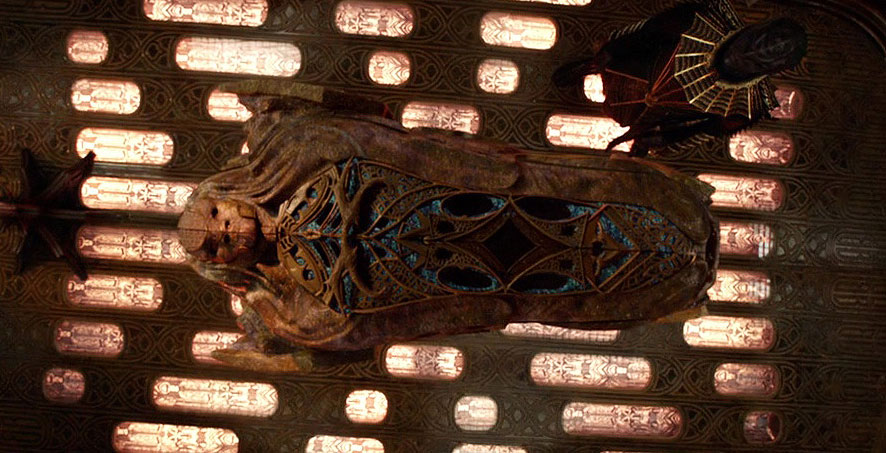
That certainly clears up some of the confusion that’s come from those early snippets of life aboard the Klingon sarcophagus ship; the floating casket seems to have no relation to the Torchbearer armor-wearing warrior we see fighting Burnham – and the editing of such video clips was simple misdirection.
…we think.
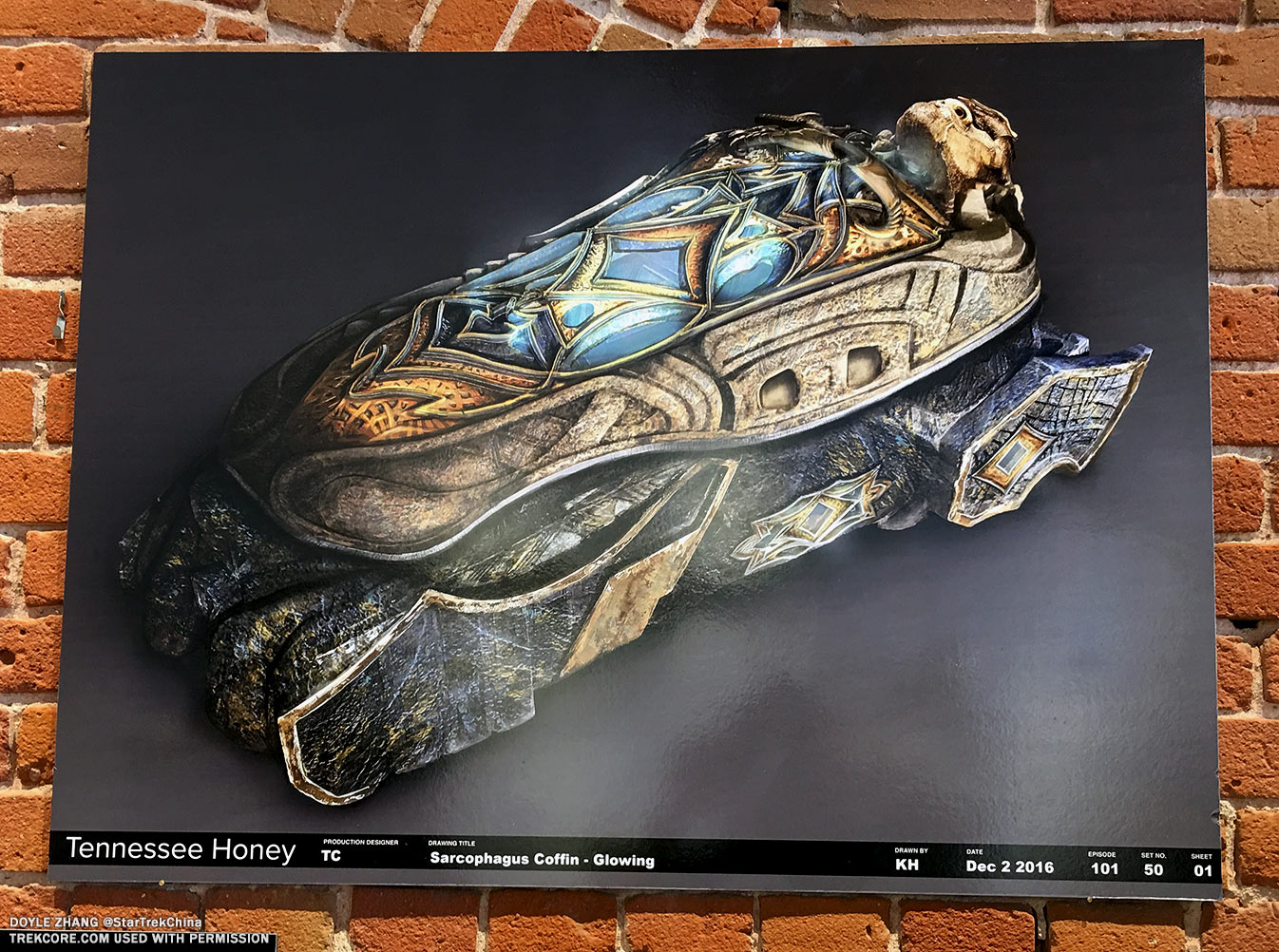
Keep watching TrekCore for more Star Trek: Discovery news as it breaks!
